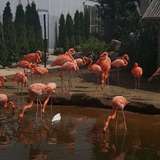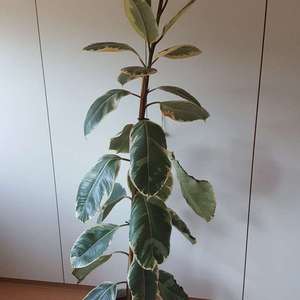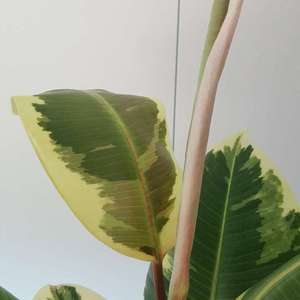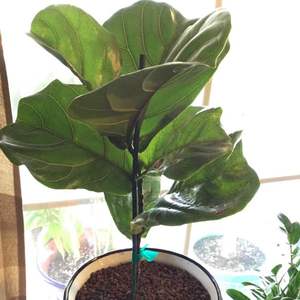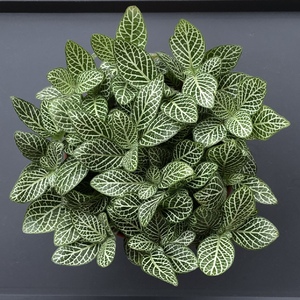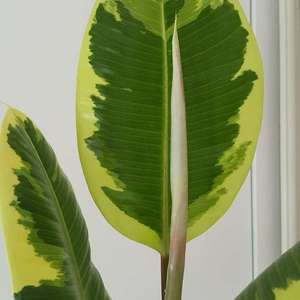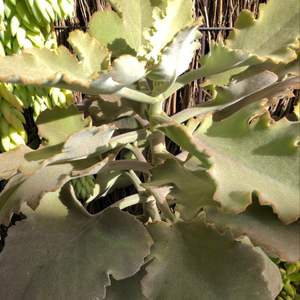求助
Vian
2018年08月16日

Who knows why my banyan leaves turn yellow?And when I touched it, the yellow leaf falled down.
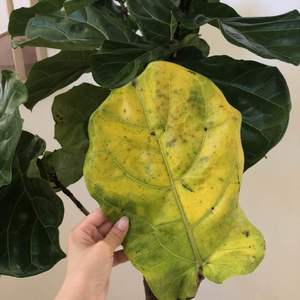
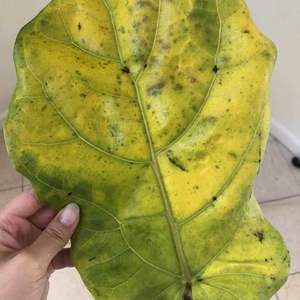


0
0
WHdeckgardener:it's a fiddle leaf fig: Ficus lyrata, commonly known as the fiddle-leaf fig, is a species of flowering plant in the mulberry and fig family Moraceae. It is native to western Africa, from Cameroon west to Sierra Leone, where it grows in lowland tropical rainforest.
文章
Miss Chen
2018年08月14日

Hostas are popular perennials typically planted or transplanted in early spring and early fall. Gardeners have roughly 2,500 hosta varieties from which to choose, with each variety offering a wide array of leaf sizes, shapes, colors and textures. Some hostas even produce fragrant blooms.

Also known as plantain lilies, hostas are simple to care for and perfect for shade gardens. They are hardy in U.S. Department of Agriculture plant hardiness zones 3 through 8, depending on their variety.
Spring and Fall Planting
The best times to plant or transplant hostas is in early spring after the last average annual frost date has passed. A late-spring frost can damage the plants' new leaves, however. Place plastic pots over emerging plants if temperatures are going below freezing.
Hostas also can be planted or transplanted in early fall, or at least six weeks before the first average annual frost date. This gives it enough time for the plants to develop strong root systems before the ground freezes.
Sun and Shade
Although hostas do well in some shade, they don't thrive in full shade. However, they do especially well in locations with morning sunlight and afternoon shade. In full afternoon sunlight, hostas can find themselves with leaf burn during summer.
If you have a particular planting spot in mind, choose hosta by leaf color. Hostas with blue leaves grow best in shade, and those with white, gold or yellow leaves prefer more sun exposure.
Planting Hostas
Hostas thrive in loamy, slightly acidic, well-draining soil. Add 6 inches of compost or organic matter to 12 inches of soil. The optimal pH level for hostas is 6.5 to 7.5. Dig a 12-inch-deep planting hole for each hosta plant. Make each hole's width 1 1/2 times the anticipated size of the plant's root ball at maturity, as indicated on the plant's label.

Tap around all sides of the container holding a hosta to loosen the soil and roots before removing the plant. Use fingers to loosen tangled root balls if necessary, and shake any loose soil from the roots. Do not add the loose soil to the planting hole. Plant your hosta in the hole at the same soil depth at which the plant grew in its container. Typically, the first set of leaves above the roots should be at ground level.
If your hosta came with bare roots, soak the roots in lukewarm water for 30 minutes before planting. Build a small mound in the bottom of the planting hole, and spread the roots over the mound. Fill the hole with soil and water. Saturate the top 6 inches of soil around the plant with water.
Watering Hosta
Water hosta as needed, but at least once per week depending on the dryness of the soil. Soil should be moist and not dry. Early morning or in the evening when the sun begins to set is the best time to water the plants. Signs that hostas are underwatered include drooping leaves and burned leaf tips.
Spring Growth
Beginning in March, hostas alternate between producing leaves and roots. They have one or two cycles, or flushes, during which three or four oversized leaves emerge. These leaves take several weeks to open.
After the first flush's leaves open, the plants begin to harden off, or become accustomed to the conditions, and produce waxy purple pigments. At the completion of this leaf phase, the plants start producing white roots above roots they produced the previous year.
Soon the second flush begins with the emergence of three or four leaves. Keep the plants well-watered because the leaves consist mostly of water.
Summer Flowers
Hostas bloom for about three or more weeks in summer. Each lily-like blossom opens at the top of a long, vertical shoot. Bees pollinate the flowers, which then create seedpods. The black seeds inside the seedpods ripen in six to eight weeks. At the base of each blooming shoot, dormant buds emerge to become new shoots and leaves next spring.
Fall Preparation
When hostas' yellow pigments become visible and their green leaves turn to gold in fall, it signals the plants are preparing for winter. At that time, it is too late to plant or transplant them.
Before the first snow, remove all foliage and stems from the hostas. Apply a 2- to 3-inch-thick layer of mulch over the soil of hostas you planted or transplanted in spring or fall to protect the plants during winter.
Winter Dormancy
During winter, hostas remain dormant, with no growth of any kind. Hostas require roughly 700 hours of temperatures below 40 degrees Fahrenheit. The longer the cold period lasts during their dormancy, the stronger the plants emerge in spring.

Also known as plantain lilies, hostas are simple to care for and perfect for shade gardens. They are hardy in U.S. Department of Agriculture plant hardiness zones 3 through 8, depending on their variety.
Spring and Fall Planting
The best times to plant or transplant hostas is in early spring after the last average annual frost date has passed. A late-spring frost can damage the plants' new leaves, however. Place plastic pots over emerging plants if temperatures are going below freezing.
Hostas also can be planted or transplanted in early fall, or at least six weeks before the first average annual frost date. This gives it enough time for the plants to develop strong root systems before the ground freezes.
Sun and Shade
Although hostas do well in some shade, they don't thrive in full shade. However, they do especially well in locations with morning sunlight and afternoon shade. In full afternoon sunlight, hostas can find themselves with leaf burn during summer.
If you have a particular planting spot in mind, choose hosta by leaf color. Hostas with blue leaves grow best in shade, and those with white, gold or yellow leaves prefer more sun exposure.
Planting Hostas
Hostas thrive in loamy, slightly acidic, well-draining soil. Add 6 inches of compost or organic matter to 12 inches of soil. The optimal pH level for hostas is 6.5 to 7.5. Dig a 12-inch-deep planting hole for each hosta plant. Make each hole's width 1 1/2 times the anticipated size of the plant's root ball at maturity, as indicated on the plant's label.

Tap around all sides of the container holding a hosta to loosen the soil and roots before removing the plant. Use fingers to loosen tangled root balls if necessary, and shake any loose soil from the roots. Do not add the loose soil to the planting hole. Plant your hosta in the hole at the same soil depth at which the plant grew in its container. Typically, the first set of leaves above the roots should be at ground level.
If your hosta came with bare roots, soak the roots in lukewarm water for 30 minutes before planting. Build a small mound in the bottom of the planting hole, and spread the roots over the mound. Fill the hole with soil and water. Saturate the top 6 inches of soil around the plant with water.
Watering Hosta
Water hosta as needed, but at least once per week depending on the dryness of the soil. Soil should be moist and not dry. Early morning or in the evening when the sun begins to set is the best time to water the plants. Signs that hostas are underwatered include drooping leaves and burned leaf tips.
Spring Growth
Beginning in March, hostas alternate between producing leaves and roots. They have one or two cycles, or flushes, during which three or four oversized leaves emerge. These leaves take several weeks to open.
After the first flush's leaves open, the plants begin to harden off, or become accustomed to the conditions, and produce waxy purple pigments. At the completion of this leaf phase, the plants start producing white roots above roots they produced the previous year.
Soon the second flush begins with the emergence of three or four leaves. Keep the plants well-watered because the leaves consist mostly of water.
Summer Flowers
Hostas bloom for about three or more weeks in summer. Each lily-like blossom opens at the top of a long, vertical shoot. Bees pollinate the flowers, which then create seedpods. The black seeds inside the seedpods ripen in six to eight weeks. At the base of each blooming shoot, dormant buds emerge to become new shoots and leaves next spring.
Fall Preparation
When hostas' yellow pigments become visible and their green leaves turn to gold in fall, it signals the plants are preparing for winter. At that time, it is too late to plant or transplant them.
Before the first snow, remove all foliage and stems from the hostas. Apply a 2- to 3-inch-thick layer of mulch over the soil of hostas you planted or transplanted in spring or fall to protect the plants during winter.
Winter Dormancy
During winter, hostas remain dormant, with no growth of any kind. Hostas require roughly 700 hours of temperatures below 40 degrees Fahrenheit. The longer the cold period lasts during their dormancy, the stronger the plants emerge in spring.
0
0
成长记
kensong
2018年08月14日

The Agave Schidigera is a stunning succulent with a single rosette of slender spiky leaves that is dark green with conspicuous white swirly hairs on the leaf margins. Slow growing and not a difficult one to care for.
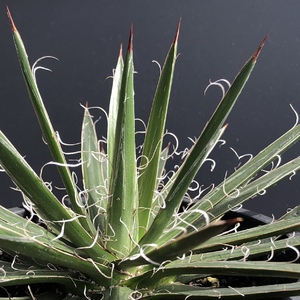
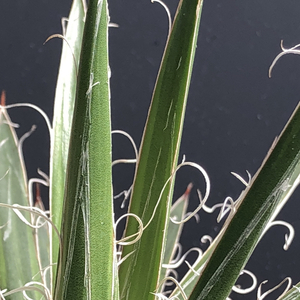


0
0
文章
Miss Chen
2018年08月06日

Description: This perennial herbaceous plant consists of a pair of leaves that are nearly basal and a single raceme of flowers. The leaf blades are 5-10" long, 3-5" across, and more or less erect; they are oval-ovate in shape and smooth (entire) along their margins. Both the lower and upper leaf surfaces are medium to dark green, glabrous, and sometimes slightly glaucous. Leaf venation is parallel. The leaves taper into petioles about 1½–3" long that wrap around a short basal stalk that is partially underground. Between the leaves, there develops a raceme of flowers about 4-9" long. This raceme is shorter than the leaves and it tends to nod toward its apex; there are 6-16 flowers per raceme. The central stalk of the raceme is medium green, terete, somewhat slender, and glabrous. The nodding flowers usually occur along one side of the raceme from pedicels that are up to ½" long; these pedicels are light green, terete, and glabrous. At the bases of these pedicels, there are solitary floral bracts. These floral bracts are up to 8 mm. (1/3") long, light green to nearly white, and narrowly lanceolate to ovate in shape; they are shorter than the corresponding pedicels.
The white corollas of these flowers are about 8 mm. (1/3") long and similarly across; they are campanulate (bell-shaped) with 6 short lobes that curve outward. Within the corolla of each flower, there are 6 stamens with short filaments and a single style with a tripartite stigma. The ovary of each flower has 3 cells. The blooming period occurs from late spring to early summer, lasting about 3 weeks. The flowers are quite fragrant. When the flowers are successfully cross-pollinated from the pollen of genetically distinct plants, they develop red berries that are 6-8 mm. across and globoid in shape (one berry per fertile flower). The interior of each berry is juicy, containing 1-6 seeds. These seeds are 3-4 mm. long and light brown with darker scar tissue at their bases; they are more or less ovoid in shape, but also rather irregular and chunky. In North America, most flowering plants fail to produce berries. The root system is fibrous and rhizomatous. Dense colonies of clonal plants are produced from the dense network of rhizomes; these colonies tend to exclude other species of plants.

Cultivation: The preference is dappled sunlight to medium shade, moist to mesic conditions, and a rich loamy soil with abundant organic material. Once it becomes established, this plant is long-lived, and it will spread slowly via its rhizomes. The leaves remain green throughout the summer until frost occurs during the autumn. Propagation of new plants is easiest by division of the rhizomes. If you want Lily-of-the-Valley to produce the attractive red berries, then you will need to plant genetically distinct plants in proximity to each other from two or more sources.
Range & Habitat: Lily-of-the-Valley has escaped from cultivation primarily in NE Illinois (see Distribution Map), where it is uncommon in natural areas. This species was introduced into the United States from Europe as an ornamental plant; it is often grown in gardens because of the attractive foliage and flowers. In addition to the typical European variety that is described here (Convallaria majalis majalis), there is also a North American variety of Lily-of-the-Valley (Convallaria majalis montana) that is native to the region of the Appalachian mountains. However, this North American variety is cultivated much less often than the European variety of Lily-of-the-Valley, and it has not naturalized in Illinois to anyone's knowledge. In Illinois, the European variety of Lily-of-the-Valley has naturalized in such habitats as tamarack bogs, rich deciduous woodlands, pioneer cemetery prairies, oak savannas near pioneer cemetery prairies, and abandoned homestead sites. At some of these habitats, Lily-of-the-Valley was deliberately introduced, where it has persisted for several decades, notwithstanding long neglect.

Faunal Associations: Bumblebees and honeybees collect pollen from the flowers of Lily-of-the-Valley; nectar may not be produced (Vandepitte, 2010; Müller 1873/1883). Among bumblebee species, Bombus vagans and Bombus pensylvanicus have been observed to visit the flowers (Mathews, 1912). Insects that feed on the foliage and other parts of this plant are limited in number. An insect that was accidentally introduced into North America from Europe, Lilioceris lilii (Lily Leaf Beetle), feeds on the leaves, while an aphid, Macrosiphum pechumani, sucks sap from this plant (Clark et al., 2004; Blackman & Eastop, 2013). The red berries probably attract birds and possibly some rodents, although because these berries are rarely produced in North America, it is unknown which species would consume them. According to Eriksson (1999), the seeds of these berries are eaten by voles and wood rats in Europe. Because all parts of Lily-of-the-Valley contain cardiac glycosides that are toxic, it is largely ignored by mammalian herbivores. Overall, the ecological value of this plant appears to be low.

Photographic Location: A wooded area at Meadowbrook Park in Urbana, Illinois, and a flower garden in the same city.
Comments: In addition to its cultivation in gardens, Lily-of-the-Valley has economic significance in the perfume and pharmaceutical industries. For the latter, it has been used as a source of heart medication. There are two varieties of Lily-of-the-Valley: the typical European variety (Convallaria majalis majalis) and the North American variety (Convallaria majalis montana). This latter variety can be distinguished by its larger floral bracts (at least 10 mm. in length) and the fine green lines along the midribs of its tepals (the tepals have been joined together to form a bell-shaped corolla for each flower). As compared to the European variety, the North American variety also appears to be less aggressive in forming large dense colonies of clonal plants.
The white corollas of these flowers are about 8 mm. (1/3") long and similarly across; they are campanulate (bell-shaped) with 6 short lobes that curve outward. Within the corolla of each flower, there are 6 stamens with short filaments and a single style with a tripartite stigma. The ovary of each flower has 3 cells. The blooming period occurs from late spring to early summer, lasting about 3 weeks. The flowers are quite fragrant. When the flowers are successfully cross-pollinated from the pollen of genetically distinct plants, they develop red berries that are 6-8 mm. across and globoid in shape (one berry per fertile flower). The interior of each berry is juicy, containing 1-6 seeds. These seeds are 3-4 mm. long and light brown with darker scar tissue at their bases; they are more or less ovoid in shape, but also rather irregular and chunky. In North America, most flowering plants fail to produce berries. The root system is fibrous and rhizomatous. Dense colonies of clonal plants are produced from the dense network of rhizomes; these colonies tend to exclude other species of plants.

Cultivation: The preference is dappled sunlight to medium shade, moist to mesic conditions, and a rich loamy soil with abundant organic material. Once it becomes established, this plant is long-lived, and it will spread slowly via its rhizomes. The leaves remain green throughout the summer until frost occurs during the autumn. Propagation of new plants is easiest by division of the rhizomes. If you want Lily-of-the-Valley to produce the attractive red berries, then you will need to plant genetically distinct plants in proximity to each other from two or more sources.
Range & Habitat: Lily-of-the-Valley has escaped from cultivation primarily in NE Illinois (see Distribution Map), where it is uncommon in natural areas. This species was introduced into the United States from Europe as an ornamental plant; it is often grown in gardens because of the attractive foliage and flowers. In addition to the typical European variety that is described here (Convallaria majalis majalis), there is also a North American variety of Lily-of-the-Valley (Convallaria majalis montana) that is native to the region of the Appalachian mountains. However, this North American variety is cultivated much less often than the European variety of Lily-of-the-Valley, and it has not naturalized in Illinois to anyone's knowledge. In Illinois, the European variety of Lily-of-the-Valley has naturalized in such habitats as tamarack bogs, rich deciduous woodlands, pioneer cemetery prairies, oak savannas near pioneer cemetery prairies, and abandoned homestead sites. At some of these habitats, Lily-of-the-Valley was deliberately introduced, where it has persisted for several decades, notwithstanding long neglect.

Faunal Associations: Bumblebees and honeybees collect pollen from the flowers of Lily-of-the-Valley; nectar may not be produced (Vandepitte, 2010; Müller 1873/1883). Among bumblebee species, Bombus vagans and Bombus pensylvanicus have been observed to visit the flowers (Mathews, 1912). Insects that feed on the foliage and other parts of this plant are limited in number. An insect that was accidentally introduced into North America from Europe, Lilioceris lilii (Lily Leaf Beetle), feeds on the leaves, while an aphid, Macrosiphum pechumani, sucks sap from this plant (Clark et al., 2004; Blackman & Eastop, 2013). The red berries probably attract birds and possibly some rodents, although because these berries are rarely produced in North America, it is unknown which species would consume them. According to Eriksson (1999), the seeds of these berries are eaten by voles and wood rats in Europe. Because all parts of Lily-of-the-Valley contain cardiac glycosides that are toxic, it is largely ignored by mammalian herbivores. Overall, the ecological value of this plant appears to be low.

Photographic Location: A wooded area at Meadowbrook Park in Urbana, Illinois, and a flower garden in the same city.
Comments: In addition to its cultivation in gardens, Lily-of-the-Valley has economic significance in the perfume and pharmaceutical industries. For the latter, it has been used as a source of heart medication. There are two varieties of Lily-of-the-Valley: the typical European variety (Convallaria majalis majalis) and the North American variety (Convallaria majalis montana). This latter variety can be distinguished by its larger floral bracts (at least 10 mm. in length) and the fine green lines along the midribs of its tepals (the tepals have been joined together to form a bell-shaped corolla for each flower). As compared to the European variety, the North American variety also appears to be less aggressive in forming large dense colonies of clonal plants.
0
0
文章
Miss Chen
2018年07月29日

The process of deadheading -- or removing the wilted blooms from a flowering plant -- focuses the plant's energy into healthy root and leaf growth instead of seed production. In some plants, it also encourages the plants to bloom again. The various coneflower species respond well to deadheading, but there are also good reasons for not deadheading coneflowers.
Coneflower Blooms
Coneflowers all belong to the plant family, Asteraceae, and the blooms are similar enough they can all be deadheaded the same way, or left on the plant for the same reasons. Not every type of coneflower blooms at the same time, so be on the lookout throughout the summer and fall to deadhead in a timely manner.

The common name "coneflower" applies to several genera, including Echinacea, Rudbeckia and Ratibida. All have a cone-shaped flower center, though plants in the Echinacea genus are the ones most often referred to as "coneflowers."
Purple coneflower (Echinacea purpurea), which grows in U.S. Department of Agriculture plant hardiness zones 3 through 8, has purple-pink petals around an orange center. It grows 2 to 5 feet tall, and blooms all summer
Yellow coneflower (Echinacea paradoxa), which grows in USDA zones 5 through 8, grows 2 to 3 feet tall. It blooms all summer, and has thin yellow petals around a brown center.
Black-eyed Susan (Rudbeckia fulgida), which grows in USDA zones 3 through 9, is a sturdy perennial that grows 2 to 3 feet tall and blooms midsummer through fall. The daisylike yellow flowers have a black center.
Gray-head coneflower (Ratibida pinnata), which grows in USDA zones 3 through 8, grows 3 to 5 feet tall and blooms in the summer. It has thin yellow flower petals that fold back from a 1-inch gray center.
Mexican hat plant (Ratibida columnifera), which grows in USDA zones 4 through 9, is also called long-headed coneflower because the flower center can reach 2 inches high. It grows 1 to 3 feet tall, has yellow flower petals and blooms in the summer and early fall.
Missouri coneflower (Rudbeckia missouriensis), which grows in USDA zones 5 through 8, grows 2 to 3 feet tall and blooms summer through fall. It has orange-yellow flowers with a black center.
Reasons to Deadhead
Deadheading coneflowers can encourage rebloom. Purple coneflower and yellow coneflower will rebloom without deadheading, but black-eyed Susan must be deadheaded if you want reliable repeat blooming all summer and into fall.

Removing spent blooms also prevents self-seeding. If you don't want the plants to spread throughout the garden, make sure you deadhead plants before the seed heads ripen. Removing the flowers as soon as they are finished blooming also keeps the garden looking neat and tidy.
Leaving the Seeds
If you decide not to deadhead coneflowers, the seeds will attract birds to the garden. The seeds that birds don't eat fall to the ground and easily sprout to create more plants. Self-seeding can result in a large number of seedlings in the spring, which will start blooming after about two years.
The flower center of the coneflower is where seeds develop. After the petals fall off, these seed heads often remain upright in the garden throughout all or part of the winter. This provides winter interest in the garden in the form of dark-colored cone-shaped seed heads, and birds that are attracted to the seeds.
Coneflower Blooms
Coneflowers all belong to the plant family, Asteraceae, and the blooms are similar enough they can all be deadheaded the same way, or left on the plant for the same reasons. Not every type of coneflower blooms at the same time, so be on the lookout throughout the summer and fall to deadhead in a timely manner.

The common name "coneflower" applies to several genera, including Echinacea, Rudbeckia and Ratibida. All have a cone-shaped flower center, though plants in the Echinacea genus are the ones most often referred to as "coneflowers."
Purple coneflower (Echinacea purpurea), which grows in U.S. Department of Agriculture plant hardiness zones 3 through 8, has purple-pink petals around an orange center. It grows 2 to 5 feet tall, and blooms all summer
Yellow coneflower (Echinacea paradoxa), which grows in USDA zones 5 through 8, grows 2 to 3 feet tall. It blooms all summer, and has thin yellow petals around a brown center.
Black-eyed Susan (Rudbeckia fulgida), which grows in USDA zones 3 through 9, is a sturdy perennial that grows 2 to 3 feet tall and blooms midsummer through fall. The daisylike yellow flowers have a black center.
Gray-head coneflower (Ratibida pinnata), which grows in USDA zones 3 through 8, grows 3 to 5 feet tall and blooms in the summer. It has thin yellow flower petals that fold back from a 1-inch gray center.
Mexican hat plant (Ratibida columnifera), which grows in USDA zones 4 through 9, is also called long-headed coneflower because the flower center can reach 2 inches high. It grows 1 to 3 feet tall, has yellow flower petals and blooms in the summer and early fall.
Missouri coneflower (Rudbeckia missouriensis), which grows in USDA zones 5 through 8, grows 2 to 3 feet tall and blooms summer through fall. It has orange-yellow flowers with a black center.
Reasons to Deadhead
Deadheading coneflowers can encourage rebloom. Purple coneflower and yellow coneflower will rebloom without deadheading, but black-eyed Susan must be deadheaded if you want reliable repeat blooming all summer and into fall.

Removing spent blooms also prevents self-seeding. If you don't want the plants to spread throughout the garden, make sure you deadhead plants before the seed heads ripen. Removing the flowers as soon as they are finished blooming also keeps the garden looking neat and tidy.
Leaving the Seeds
If you decide not to deadhead coneflowers, the seeds will attract birds to the garden. The seeds that birds don't eat fall to the ground and easily sprout to create more plants. Self-seeding can result in a large number of seedlings in the spring, which will start blooming after about two years.
The flower center of the coneflower is where seeds develop. After the petals fall off, these seed heads often remain upright in the garden throughout all or part of the winter. This provides winter interest in the garden in the form of dark-colored cone-shaped seed heads, and birds that are attracted to the seeds.
0
0
成长记
Natalie Coudré
2018年07月29日

I now added "Narrow leaf ficus - Ficus Binnendijkii" in my "garden"


0
0
文章
Miss Chen
2018年07月19日

Vining cucumbers (Cucumis sativus) are annual plants, and they grow well vertically on a trellis, poles and other upright supports. Growing cucumbers vertically saves space, reduces leaf diseases and pest attack, and provides the heavier harvests than if the plants are grown along the ground. Another benefit of growing cucumbers vertically is that Asian and oriental varieties produce long, straight fruit.
Growing Spots
Fertile, organically rich, freely draining soil and at least six hours of direct sun every day provide the best growing conditions for cucumbers. The soil pH should be around 7.0, which is neutral, and its temperature should be at least 65 degrees Fahrenheit for healthy growth. Cucumbers grow best in warm conditions.

Space cucumbers 8 to 15 inches apart or 10 inches apart if you're growing cucumbers up a trellis.
Supports for Cucumbers
Supports for cucumbers should be at least 6 feet tall. Cucumbers grow up to 6 feet tall and wide, and often grow 3 to 5 feet long before setting fruit. Set up the supports before planting cucumbers to avoid disturbing the plants' roots. Trellis provides a sturdy support, or you can grow cucumbers up bamboo poles or from hanging baskets.
Push three 8-foot bamboo poles 1 foot into the soil 1 foot apart in a triangle. Tie the top ends together with twine to make a pyramidal shape, and plant one cucumber at the base of each pole.
Another option is to grow cucumbers in hanging baskets, allowing the plants to trail. 'Pot Luck' is a cucumber variety that grows well in hanging baskets. Grow one cucumber in each basket.
Water Needs
Cucumbers are thirsty plants that need frequent watering to grow and fruit well. The soil around their roots should be evenly moist, not dry and crumbly or wet and soggy. Wilting leaves are a sign of under- or overwatered cucumbers.
Water cucumbers when the soil is dry to a depth of 1/2 inch. Apply enough water to moisten the soil to the depth of the root balls. In hot, dry weather, cucumbers may need water every day.

Fertilizer for Cucumbers
Fertilizing cucumbers twice during the growing season provides the best results. Sprinkle 1 cup of 10-10-10 or 10-20-10 fertilizer along each 10 feet of row, or 2 tablespoons around each plant, at planting, and apply 1/2 cup or 1 tablespoon of the same fertilizer when the cucumbers are 10 to 12 inches tall. . Gently rake the fertilizer into the soil surface and water it into the soil.
Training and Pinching
Cucumbers sometimes need help to grow up their support, and pinching to control their size when they grow too tall. When cucumber shoots stray from the trellis or other support, tie them to the support with pieces of soft twine.
If cucumbers grow too tall for their support, pinch off the shoot tips. Stopping upward growth in this way encourages sideways growth and more fruits.
Cucumber Varieties
Most vining cucumbers grow well vertically in small spaces. "Japanese Climbing" produces fruit 7 to 9 inches long and up to 3 inches in diameter, and "Marketmore 76" is a high-yielding variety with fruit 8 to 9 inches long and 2 to 2 1/2 inches in diameter. "Stallion White Cucumber" is named for its white or pale green fruit, which grow 6 to 8 inches long. Another variety to consider is "Yamamoto Extra Long" for the novelty of its 24-inch-long fruit.
Growing Spots
Fertile, organically rich, freely draining soil and at least six hours of direct sun every day provide the best growing conditions for cucumbers. The soil pH should be around 7.0, which is neutral, and its temperature should be at least 65 degrees Fahrenheit for healthy growth. Cucumbers grow best in warm conditions.

Space cucumbers 8 to 15 inches apart or 10 inches apart if you're growing cucumbers up a trellis.
Supports for Cucumbers
Supports for cucumbers should be at least 6 feet tall. Cucumbers grow up to 6 feet tall and wide, and often grow 3 to 5 feet long before setting fruit. Set up the supports before planting cucumbers to avoid disturbing the plants' roots. Trellis provides a sturdy support, or you can grow cucumbers up bamboo poles or from hanging baskets.
Push three 8-foot bamboo poles 1 foot into the soil 1 foot apart in a triangle. Tie the top ends together with twine to make a pyramidal shape, and plant one cucumber at the base of each pole.
Another option is to grow cucumbers in hanging baskets, allowing the plants to trail. 'Pot Luck' is a cucumber variety that grows well in hanging baskets. Grow one cucumber in each basket.
Water Needs
Cucumbers are thirsty plants that need frequent watering to grow and fruit well. The soil around their roots should be evenly moist, not dry and crumbly or wet and soggy. Wilting leaves are a sign of under- or overwatered cucumbers.
Water cucumbers when the soil is dry to a depth of 1/2 inch. Apply enough water to moisten the soil to the depth of the root balls. In hot, dry weather, cucumbers may need water every day.

Fertilizer for Cucumbers
Fertilizing cucumbers twice during the growing season provides the best results. Sprinkle 1 cup of 10-10-10 or 10-20-10 fertilizer along each 10 feet of row, or 2 tablespoons around each plant, at planting, and apply 1/2 cup or 1 tablespoon of the same fertilizer when the cucumbers are 10 to 12 inches tall. . Gently rake the fertilizer into the soil surface and water it into the soil.
Training and Pinching
Cucumbers sometimes need help to grow up their support, and pinching to control their size when they grow too tall. When cucumber shoots stray from the trellis or other support, tie them to the support with pieces of soft twine.
If cucumbers grow too tall for their support, pinch off the shoot tips. Stopping upward growth in this way encourages sideways growth and more fruits.
Cucumber Varieties
Most vining cucumbers grow well vertically in small spaces. "Japanese Climbing" produces fruit 7 to 9 inches long and up to 3 inches in diameter, and "Marketmore 76" is a high-yielding variety with fruit 8 to 9 inches long and 2 to 2 1/2 inches in diameter. "Stallion White Cucumber" is named for its white or pale green fruit, which grow 6 to 8 inches long. Another variety to consider is "Yamamoto Extra Long" for the novelty of its 24-inch-long fruit.
1
0



